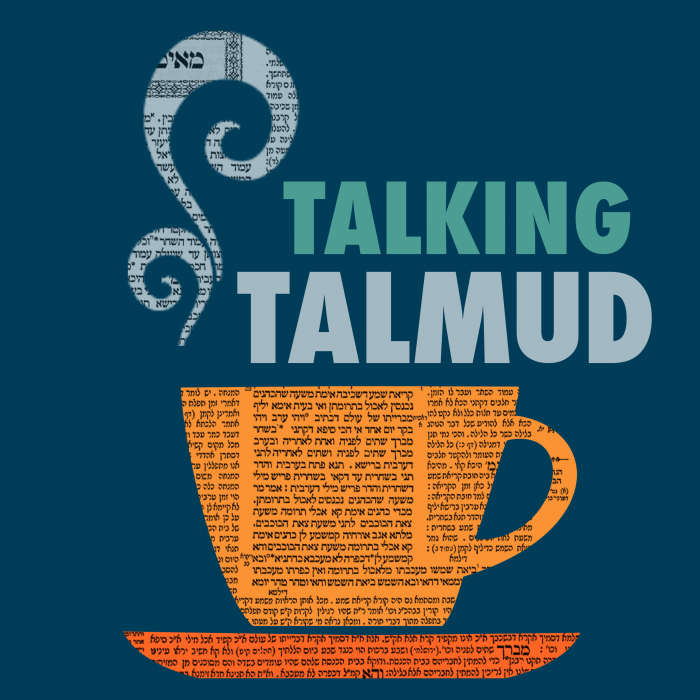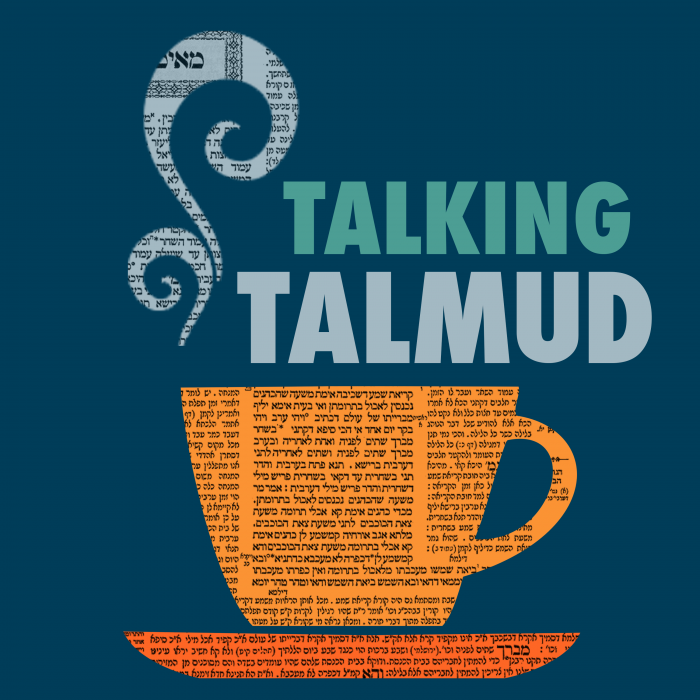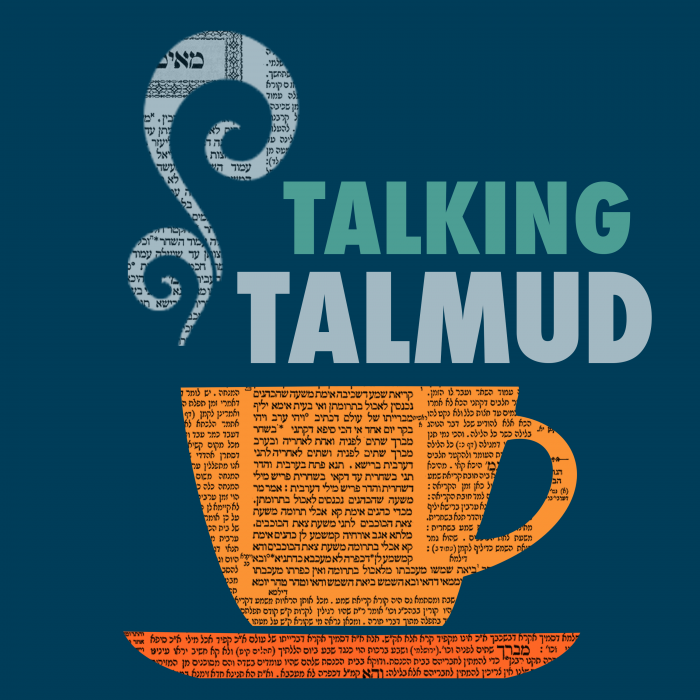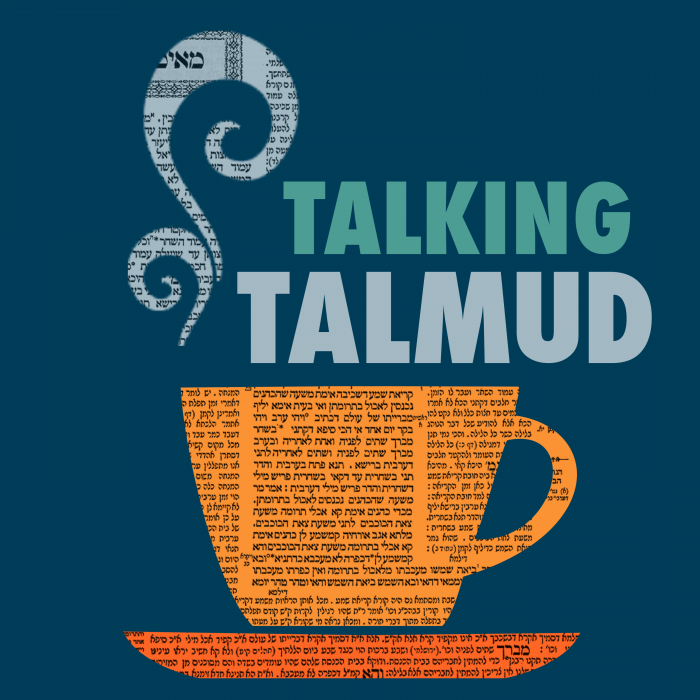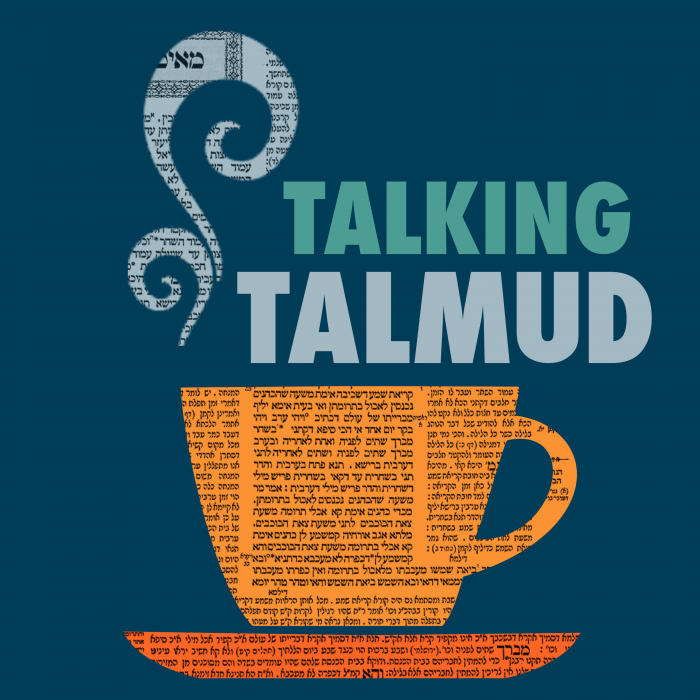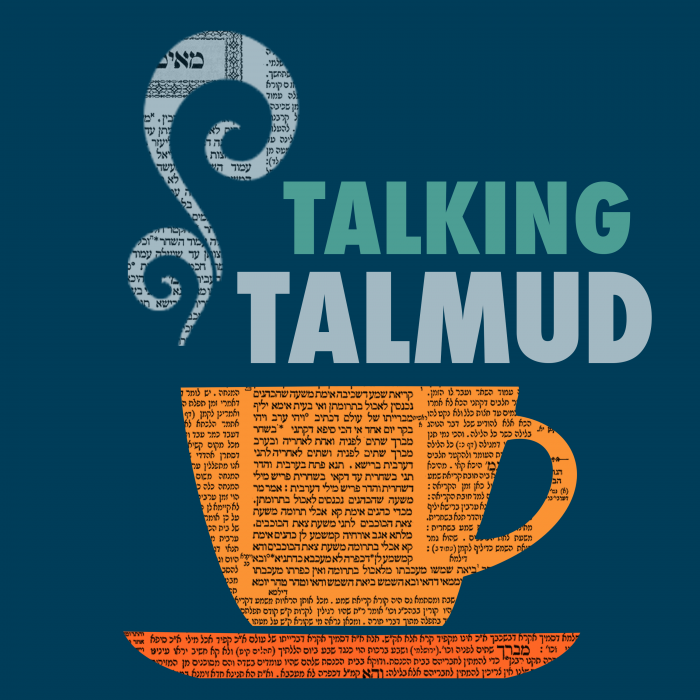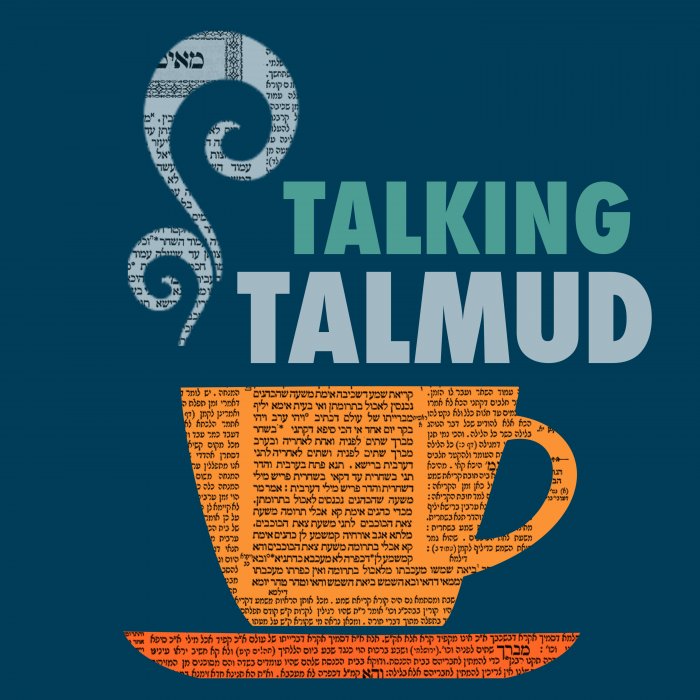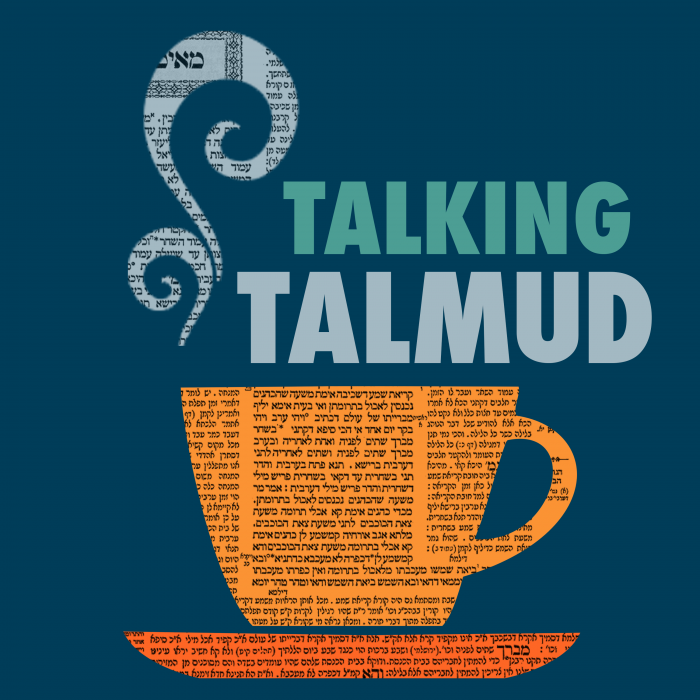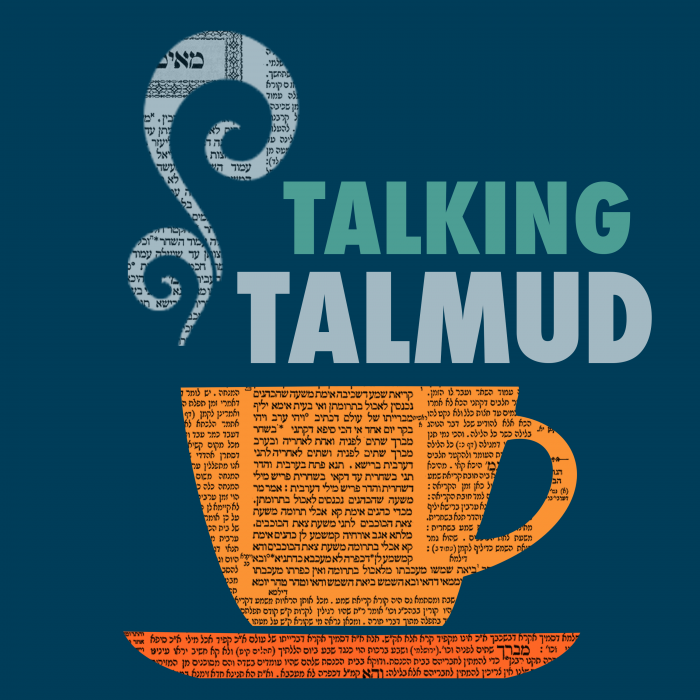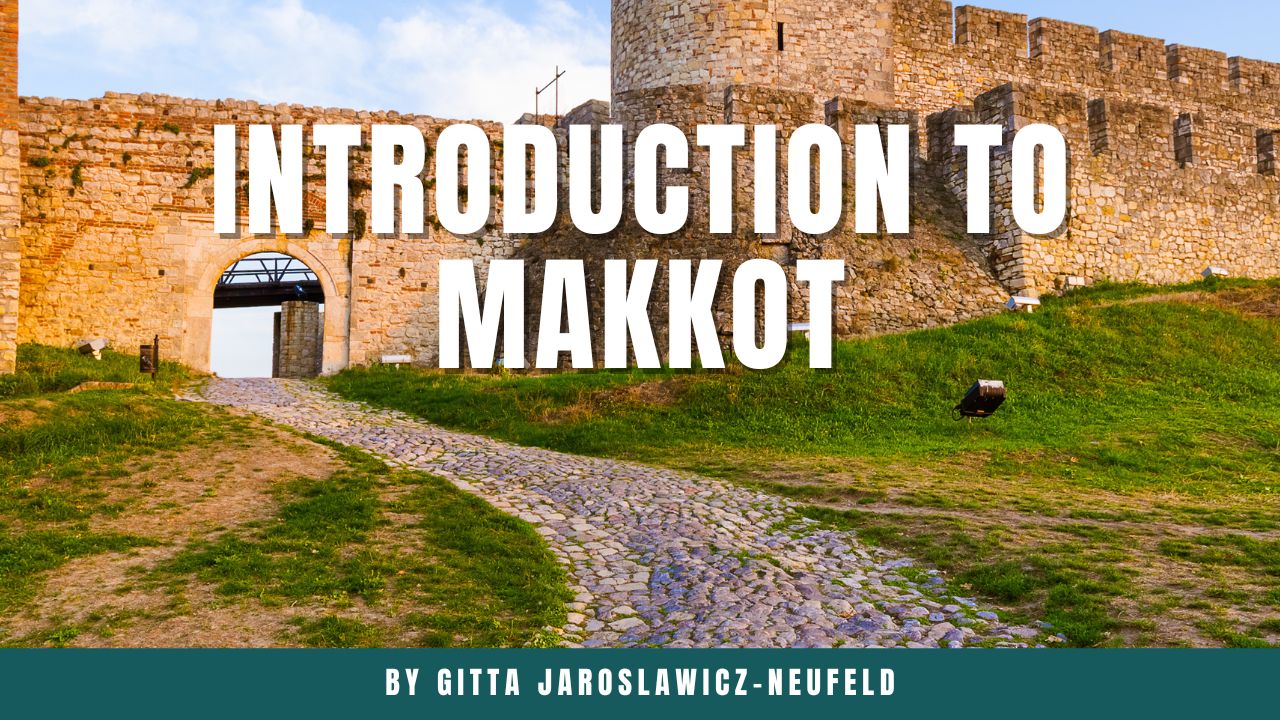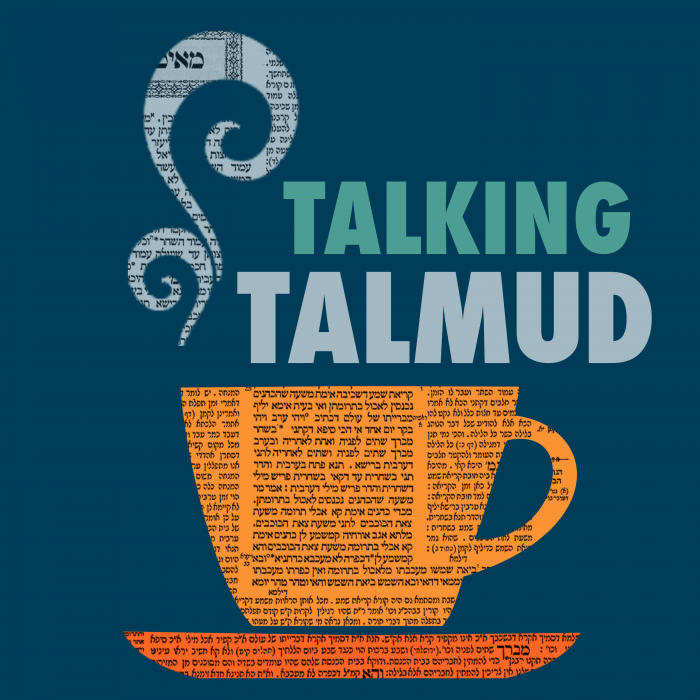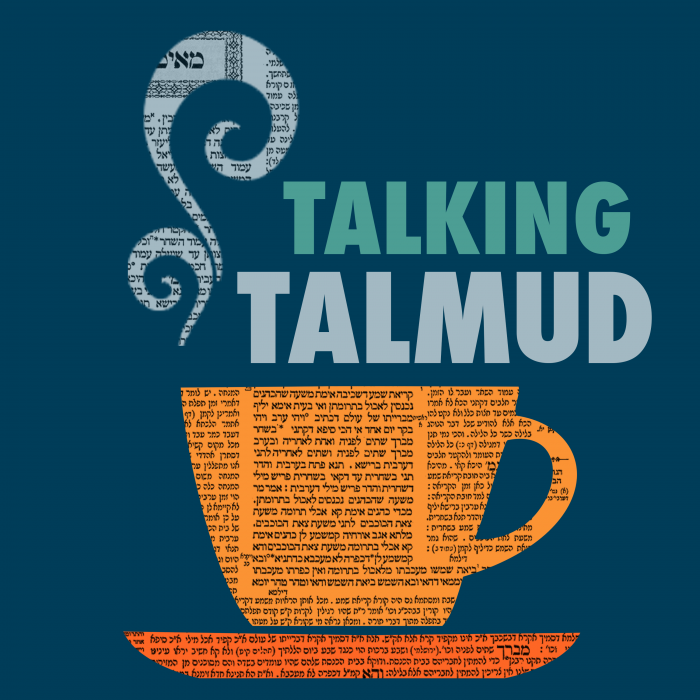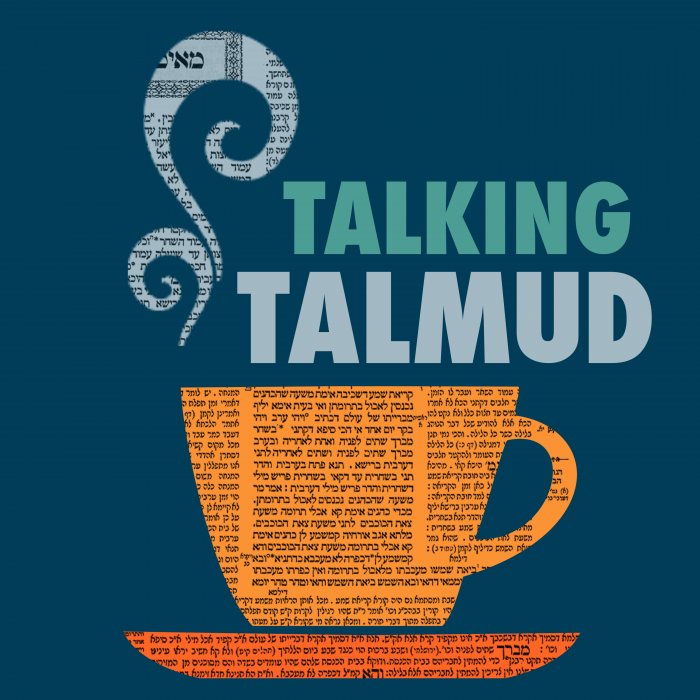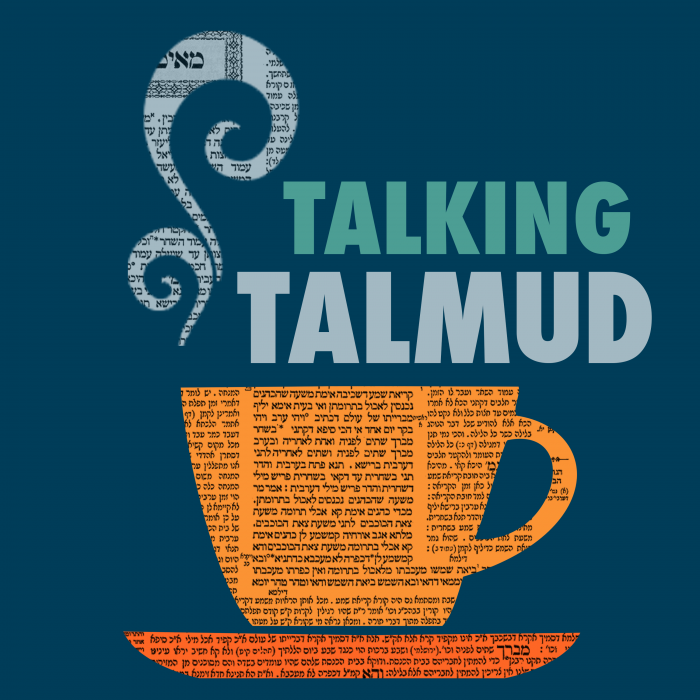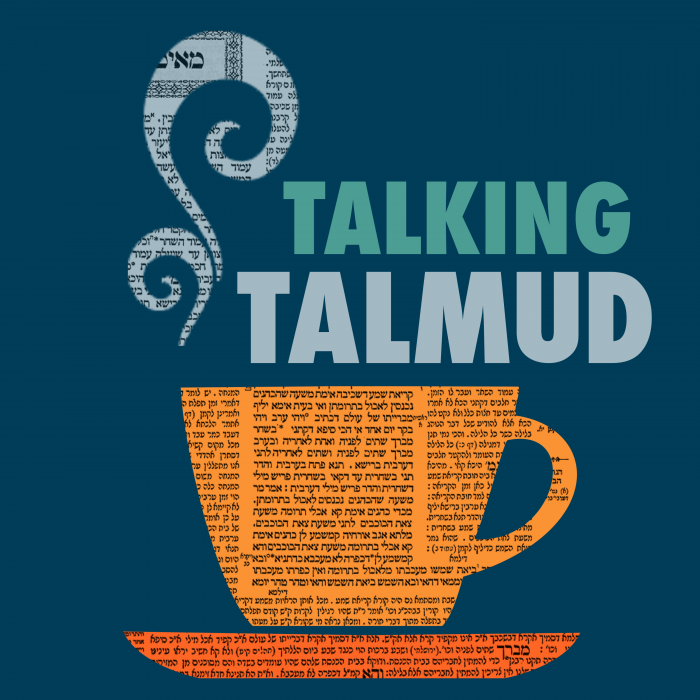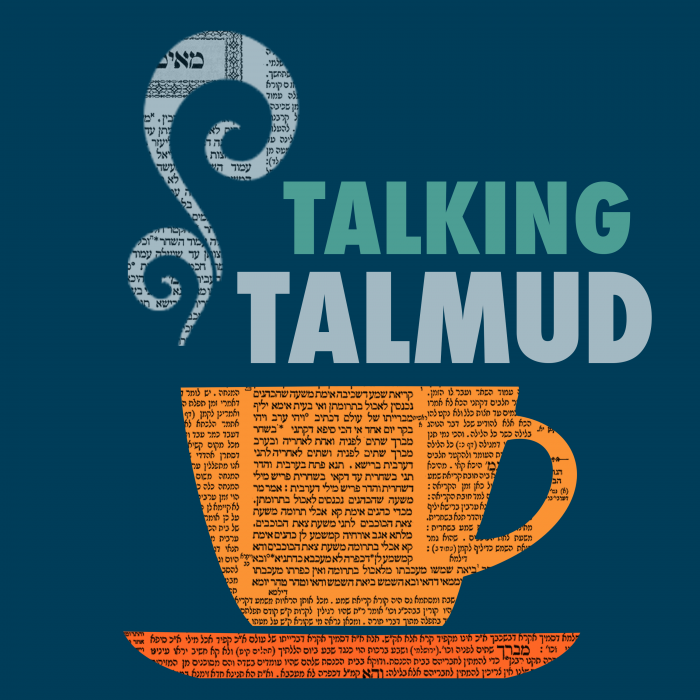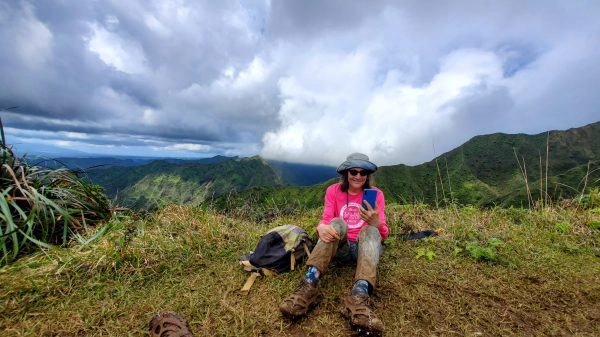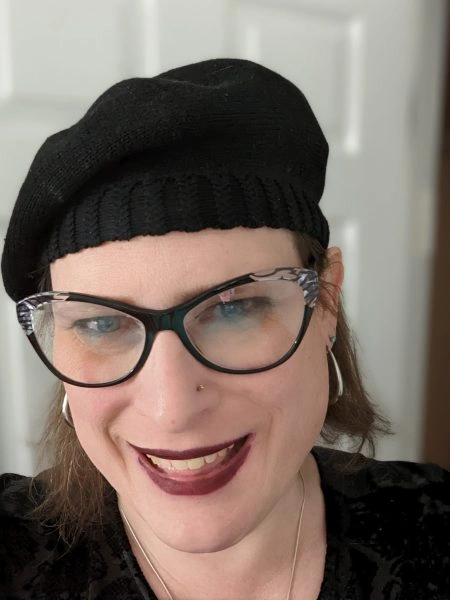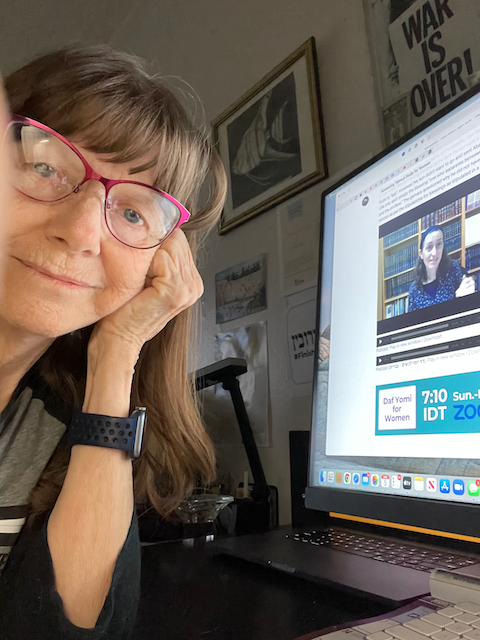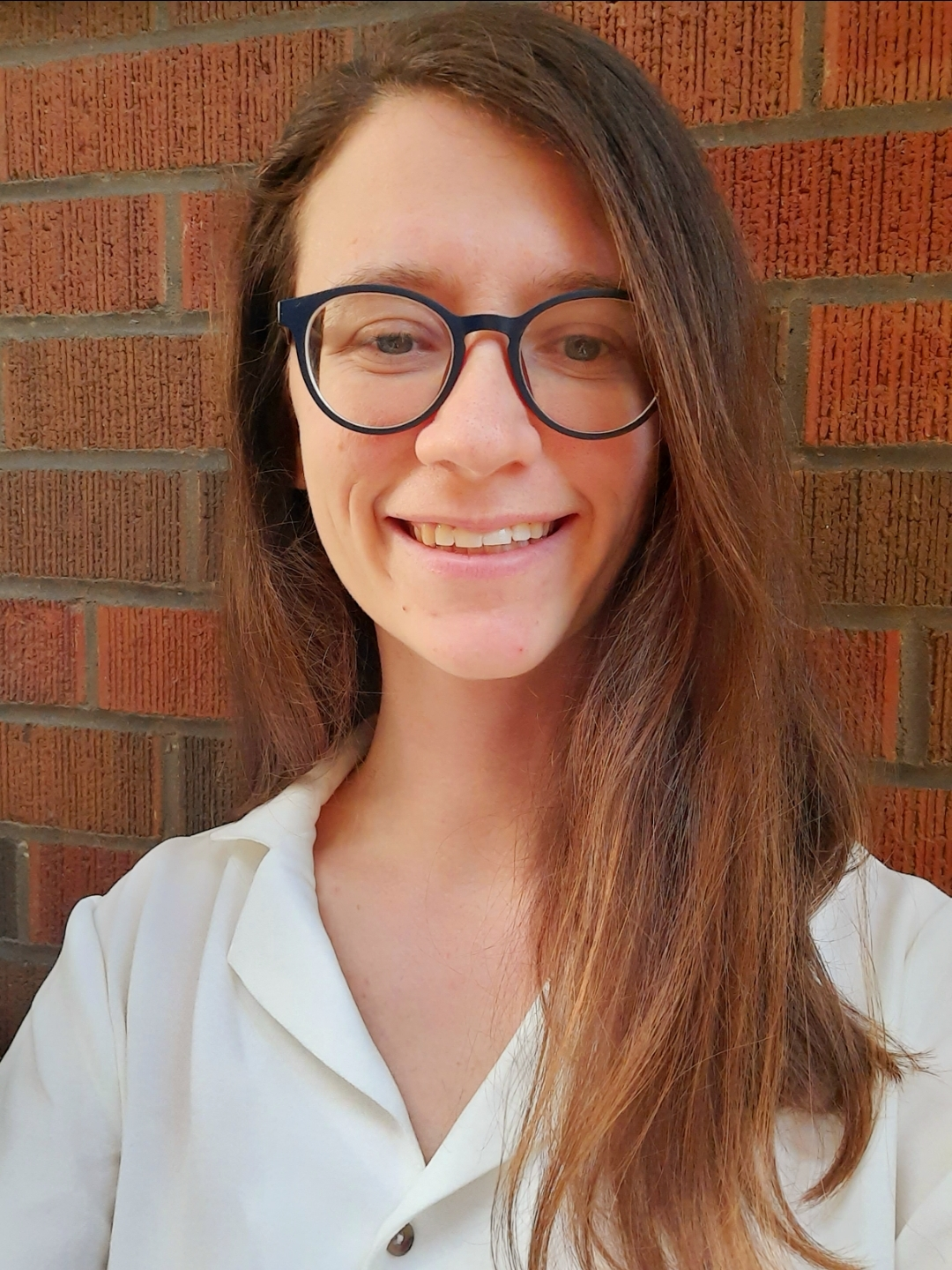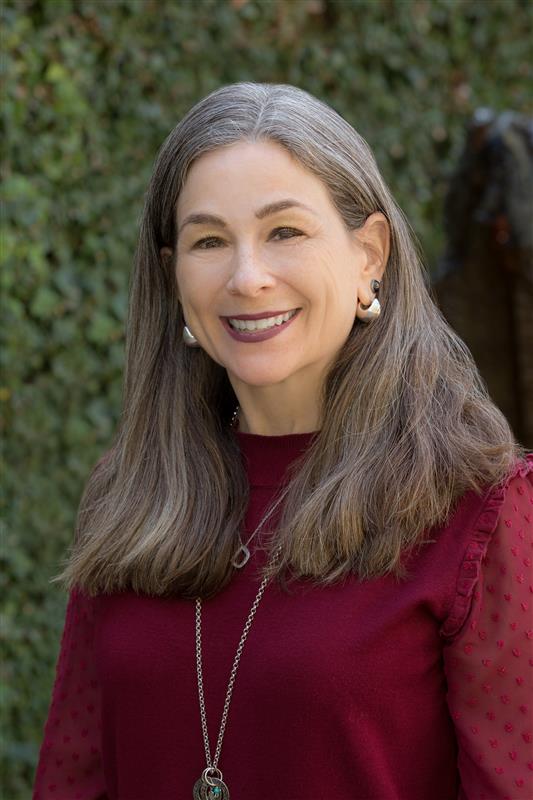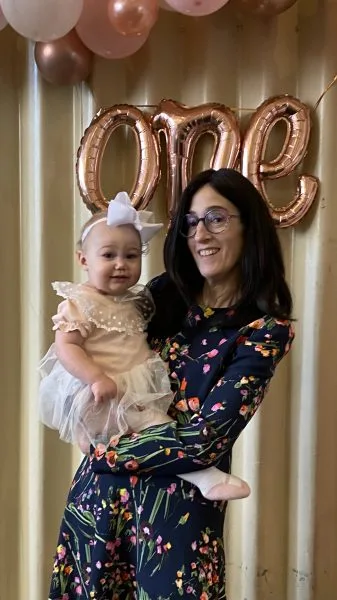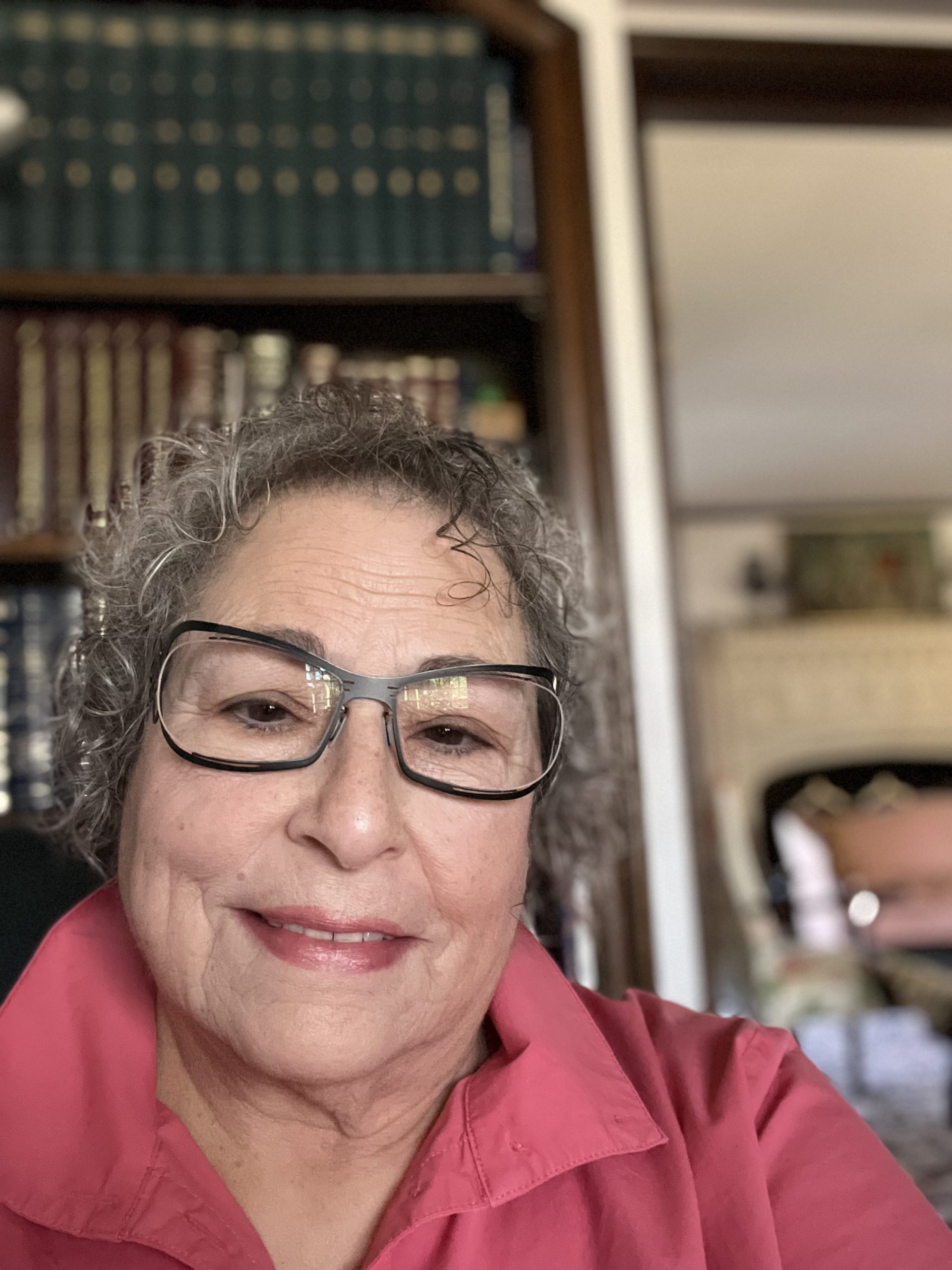The gemara resolves the issue of the size of the amot of the yesod, sovev and corners of the altar. How were the loaves of bread set up on the table? How were the vessels in the Beit Hamikdash set up – North/South or East/West?
This week’s learning is sponsored by Robert and Paula Cohen in loving memory of Joseph Cohen, Yosef ben Moshe HaCohen, z”l. “He was hard working, loved to sing, esp. as a chazan, and was very dedicated to his family and community.”
Want to dedicate learning? Get started here:


Today’s daily daf tools:
This week’s learning is sponsored by Robert and Paula Cohen in loving memory of Joseph Cohen, Yosef ben Moshe HaCohen, z”l. “He was hard working, loved to sing, esp. as a chazan, and was very dedicated to his family and community.”
Today’s daily daf tools:
Delve Deeper
Broaden your understanding of the topics on this daf with classes and podcasts from top women Talmud scholars.
New to Talmud?
Check out our resources designed to help you navigate a page of Talmud – and study at the pace, level and style that fits you.
The Hadran Women’s Tapestry
Meet the diverse women learning Gemara at Hadran and hear their stories.
Menachot 98
לָא שְׁנָא הָכִי וְלָא שְׁנָא הָכִי.
this is referring to the measurements of the corners of the altar, concerning which there is no difference with regard to this, their height, and there is no difference with regard to that, their width, as both are measured with a cubit of five handbreadths.
מִזְבֵּחַ כַּמָּה הָוֵי? חַמְשִׁין וּתְמָנְיָא. פַּלְגֵיהּ דְּמִזְבֵּחַ כַּמָּה הָוֵי? עֶשְׂרִין וְתִשְׁעָה. מִקְּרָנוֹת וְעַד סוֹבֵב כַּמָּה הָווּ? עֶשְׂרִין וּתְלָתָא.
Accordingly, how many handbreadths is the height of the altar? It is fifty-eight handbreadths high, as only eight of its cubits are of six handbreadths, while two cubits, those of the base and of the corners, are of five handbreadths. How many handbreadths is the height of half of the altar? It is twenty-nine handbreadths. How many handbreadths is the height from the top of the corners of the altar until the surrounding ledge? It is twenty-three handbreadths, as the corners of the altar are five handbreadths high, and the upper section of the altar is three cubits of six handbreadths.
כַּמָּה בְּצִיר לְפַלְגֵיהּ דְּמִזְבֵּחַ? שִׁיתָּא, וּתְנַן: אִם עֲשָׂאָהּ לְמַטָּה מֵרַגְלָיו, אֲפִילּוּ אַמָּה אַחַת – כְּשֵׁירָה.
Therefore, how many handbreadths is the surrounding ledge short of half the height of the altar? It is six handbreadths above the halfway mark. And this correlates with that which we learned in the baraita: And if the priest performed the squeezing below his feet, even one cubit beneath the ledge, it is valid. According to this calculation, one cubit below the surrounding ledge is still part of the upper section of the altar.
דַּיְקָא נָמֵי, דִּכְתִיב ״חֵיק הָאַמָּה״ וְ״אַמָּה רֹחַב״, שְׁמַע מִינַּהּ.
The Gemara adds that the language of the verse is also precise. The verse indicates that although it is referring to the height of the base, it is referring to the width of the surrounding ledge, as it is written with regard to the base: “The bottom shall be a cubit,” whereas with regard to the ledge it is written: “And the breadth a cubit.” Since the verse mentions the breadth only with regard to the surrounding ledge one can infer that the previous term is referring not to the width but to the height. The Gemara concludes: One may conclude from the language of the verse that this is the correct interpretation.
וְכַמָּה אַמָּה בֵּינוֹנִית? אָמַר רַבִּי יוֹחָנָן: שִׁשָּׁה טְפָחִים. אָמַר רַבִּי יוֹסֵי בַּר אָבִין: אַף אֲנַן נָמֵי תְּנֵינָא, רַבִּי מֵאִיר אוֹמֵר: הַשֻּׁלְחָן אׇרְכּוֹ שְׁנֵים עָשָׂר וְרׇחְבּוֹ שִׁשָּׁה.
§ The Gemara (97a) cited a dispute between Rabbi Meir and Rabbi Yehuda. According to Rabbi Meir all the cubits mentioned with regard to the Temple were medium cubits, except for the measurements of the golden altar, the corners of the external altar, its surrounding ledge, and its base. The Gemara asks: And how many handbreadths is a medium cubit? Rabbi Yoḥanan says: It is six handbreadths. Rabbi Yosei bar Avin says: We learn in a mishna (96a), as well: Rabbi Meir says: The Table, its length is twelve handbreadths and its width is six handbreadths. Since the Torah states that the length of the Table was two cubits and its width one cubit (see Exodus 25:23), this indicates that the cubit is six handbreadths.
מִכְּלָל דְּהָוְיָא אַמָּה דִּנְפִישָׁא מִינַּהּ? אִין, וְהָא תְּנַן: שְׁתֵּי אַמּוֹת הָיוּ בְּשׁוּשַׁן הַבִּירָה, אַחַת עַל קֶרֶן מִזְרָחִית צְפוֹנִית וְאַחַת עַל קֶרֶן מִזְרָחִית דְּרוֹמִית. שֶׁעַל קֶרֶן מִזְרָחִית צְפוֹנִית יְתֵירָה עַל שֶׁל מֹשֶׁה חֲצִי אֶצְבַּע, שֶׁעַל קֶרֶן מִזְרָחִית דְּרוֹמִית הָיְתָה יְתֵירָה עָלֶיהָ חֲצִי אֶצְבַּע, נִמְצֵאת יְתֵירָה עַל שֶׁל מֹשֶׁה אֶצְבַּע.
The Gemara asks: May one derive from the fact that the cubit of six handbreadths is referred to as a medium cubit that there is a cubit that is larger than the medium cubit? The Gemara answers: Yes, there is a larger cubit, and so we learned in a mishna (Kelim 17:9): There were two rods for measuring cubits in the chamber of Shushan the capital, which was located above the eastern gate of the Temple Mount, one in the northeast corner and one in the southeast corner. The one that was in the northeast corner was longer than the cubit used by Moses in the building of the Tabernacle, which was of six handbreadths, by half a fingerbreadth, and the one that was in the southeast corner was longer than the other one by another half a fingerbreadth. One therefore finds it longer than Moses’ cubit by a full fingerbreadth.
וְלָמָה אָמְרוּ אַחַת גְּדוֹלָה וְאַחַת קְטַנָּה? כְּדֵי שֶׁיְּהוּ הָאוּמָּנִין נוֹטְלִין בַּקְּטַנָּה, וּמַחְזִירִין בַּגְּדוֹלָה, כְּדֵי שֶׁלֹּא יָבוֹאוּ לִידֵי מְעִילָה.
The mishna continues: And why did the Sages say that there should be two measures of a cubit, one large and one small? It was so that the artisans who were working in the Temple would take payment according the amount of work they did, as measured by the small cubit, and return it to the Temple through their work, as measured by the large cubit, so they would not come to misuse consecrated property. If they would accept any payment that they did not deserve, they would be misusing consecrated property.
וְתַרְתֵּי לְמָה לִי? חֲדָא – לְכַסְפָּא וְדַהֲבָא, וַחֲדָא – לְבִנְיָינָא.
The Gemara asks: And why do I need two large cubits? The Gemara answers: One, the shorter of the two, was used to measure silver and gold. Since silver and gold were valuable, the difference between the two measurements was set at only half a fingerbreadth, so that the artisans would not suffer too great a loss. And the other one, which was longer than Moses’ cubit by a full fingerbreadth, was used in the construction of wood and stone structures.
תְּנַן הָתָם: שַׁעַר הַמִּזְרָח, עָלָיו שׁוּשַׁן הַבִּירָה צוּרָה. מַאי טַעְמָא?
§ The Gemara discusses the depiction of Shushan the capital: We learned in a mishna there (Middot 1:3): One of the five gates of the Temple Mount was the eastern gate upon which Shushan the capital was depicted. The Gemara asks: What is the reason that Shushan the capital was depicted on a gate of the Temple Mount?
רַב חִסְדָּא וְרַב יִצְחָק בַּר אַבְדִּימִי, חַד אָמַר: כְּדֵי שֶׁיֵּדְעוּ מֵהֵיכָן בָּאוּ, וְחַד אָמַר: כְּדֵי שֶׁתְּהֵא אֵימַת מַלְכוּת עֲלֵיהֶן.
There is a dispute with regard to this matter between Rav Ḥisda and Rav Yitzḥak bar Avdimi. One said that Shushan was depicted so that those who passed through the gate would know from where it was that they had come back to Jerusalem. The Jews returned once Persia had conquered Babylonia, and therefore they should give thanks to the Persian Empire for releasing them from exile. And one said that it was depicted so that the fear of the Persian Empire would be upon them, to prevent them from rebelling.
אָמַר רַבִּי יַנַּאי: לְעוֹלָם תְּהֵא אֵימַת מַלְכוּת עָלֶיךָ, שֶׁנֶּאֱמַר: ״וְיָרְדוּ כׇל עֲבָדֶיךָ אֵלֶּה אֵלַי וְהִשְׁתַּחֲווּ לִי לֵאמֹר״, וְאִילּוּ לְדִידֵיהּ לָא קָאָמַר לֵיהּ.
The Gemara continues to discuss giving a king his due: Rabbi Yannai says: The fear of kingship should always be upon you, even when the king does not deserve it, as it is stated that Moses said to Pharaoh, when he warned him about the forthcoming plague of the firstborn: “And all these, your servants, shall come down to me, and bow down to me, saying: Get out, you and all the people who follow you, and after that I will go out” (Exodus 11:8). Although ultimately Pharaoh would himself come to Moses, Moses mentioned only that Pharaoh’s servants would come to him, whereas he did not say this to Pharaoh about Pharaoh himself, because of giving a king his due.
רַבִּי יוֹחָנָן אָמַר: מֵהָכָא, שֶׁנֶּאֱמַר: ״וְיַד ה׳ הָיְתָה אֶל אֵלִיָּהוּ וַיְשַׁנֵּס מׇתְנָיו וַיָּרׇץ לִפְנֵי אַחְאָב עַד בֹּאֲכָה יִזְרְעֶאלָה״.
Rabbi Yoḥanan said this principle may be derived from here, as it is stated: “And the hand of the Lord was on Elijah, and he girded up his loins, and ran before Ahab to the entrance of Jezreel” (I Kings 18:46). Despite Ahab’s wickedness, Elijah acted in this manner out of respect for the king.
״וְעָלֵהוּ לִתְרוּפָה״ – רַב חִסְדָּא וְרַב יִצְחָק בַּר אַבְדִּימִי,
§ The Gemara cites another dispute between Rav Ḥisda and Rav Yitzḥak bar Avdimi: With regard to the fruit trees that in the future will grow on either side of a river that will emerge from the Temple, the verse states: “And by the river upon its bank, on this side and on that side, shall grow every tree for food, whose leaf shall not wither, neither shall its fruit fail. It shall bring forth new fruit every month, because its waters issue out of the Sanctuary, and its fruit shall be for food, and its leaf for healing [litrufa]” (Ezekiel 47:12). The Gemara interprets the term “litrufa” as a contraction of lehatir peh, meaning: To unlock the mouth, and there is a dispute between Rav Ḥisda and Rav Yitzḥak bar Avdimi with regard to the meaning of this term.
חַד אָמַר לְהַתִּיר פֶּה שֶׁלְּמַעְלָה, וְחַד אָמַר לְהַתִּיר פֶּה שֶׁלְּמַטָּה. אִיתְּמַר: חִזְקִיָּה אָמַר לְהַתִּיר פֶּה אִלְּמִים, בַּר קַפָּרָא אָמַר לְהַתִּיר פֶּה עֲקָרוֹת.
One said the leaf shall serve to unlock the mouth that is above, i.e., in the person’s head. The leaves will unlock the mouths of the mute and they will be capable of speech. And one said the leaf shall serve to unlock the mouth that is below, i.e., the womb, enabling barren women to give birth. It was likewise stated that Ḥizkiyya says: The leaf shall serve to unlock the mouth of the mute, whereas bar Kappara says: It shall serve to unlock the mouth, i.e., the womb, of the barren women.
תָּנוּ רַבָּנַן: אִילּוּ נֶאֱמַר ״וְלָקַחְתָּ סֹלֶת וְאָפִיתָ אֹתָהּ שְׁתֵּים עֶשְׂרֵה חַלּוֹת וְשַׂמְתָּ אוֹתָם שְׁתַּיִם מַעֲרָכוֹת״ וְלֹא נֶאֱמַר ״שֵׁשׁ״, הָיִיתִי אוֹמֵר אַחַת שֶׁל אַרְבַּע וְאַחַת שֶׁל שְׁמוֹנֶה, לְכָךְ נֶאֱמַר ״שֵׁשׁ״.
§ The Torah states with regard to the shewbread: “And you shall take fine flour, and bake twelve cakes from it; two-tenths of an ephah shall be in one cake. And you shall set them in two arrangements, six in an arrangement, upon the pure Table before the Lord” (Leviticus 24:5–6). The Sages taught: Had the Torah stated: “And you shall take fine flour, and bake twelve cakes from it…And you shall set them in two arrangements,” but had it not stated the continuation “six in an arrangement,” I would have said there may be one arrangement of four loaves and one of eight loaves, i.e., the arrangements do not have to be of equal size. Therefore, it is stated: “Six in an arrangement.”
וְאִילּוּ נֶאֱמַר ״שְׁתַּיִם מַעֲרָכוֹת שֵׁשׁ הַמַּעֲרָכֶת״, וְלֹא נֶאֱמַר ״שְׁתֵּים עֶשְׂרֵה״ – הָיִיתִי אוֹמֵר שָׁלֹשׁ שֶׁל שֵׁשׁ שֵׁשׁ, לְכָךְ נֶאֱמַר ״שְׁתֵּים עֶשְׂרֵה״.
The baraita continues: And had the Torah stated: “Two arrangements, six in an arrangement,” but had it not stated: “Twelve cakes,” I would have said that the total number of loaves may be more than twelve, and the phrase “six in an arrangement” teaches that one may bring another arrangement of six loaves in addition to the two mentioned in the verse, so that there are three arrangements of six loaves each. Therefore, it is stated: “Twelve cakes.”
וְאִילּוּ נֶאֱמַר ״שְׁתֵּים עֶשְׂרֵה חַלּוֹת״ וּ״מַעֲרָכוֹת״, וְלֹא נֶאֱמַר ״שְׁתַּיִם״ וְ״שֵׁשׁ״ – הָיִיתִי אוֹמֵר שָׁלֹשׁ שֶׁל אַרְבַּע אַרְבַּע, לְכָךְ נֶאֱמַר ״שְׁתַּיִם״ וְ״שֵׁשׁ״. הָא עַד שֶׁלֹּא יֵאָמְרוּ שְׁלֹשָׁה מִקְרָאוֹת הַלָּלוּ לֹא לָמַדְנוּ.
And had the Torah stated: Twelve cakes…And you shall set them in arrangements, but had it not stated: “Two” and “Six,” I would have said that the twelve loaves should be divided into three arrangements of four loaves each. Therefore, it is stated: “Two arrangements,” and: “Six in an arrangement.” Therefore, until these three phrases in the verses were stated we could not learn how to set the shewbread on the Table.
הָא כֵּיצַד? נוֹתֵן שְׁתַּיִם מַעֲרָכוֹת שֶׁל שֵׁשׁ שֵׁשׁ, וְאִם נָתַן אַחַת שֶׁל אַרְבַּע וְאַחַת שֶׁל שְׁמוֹנֶה – לֹא יָצָא, שְׁתַּיִם שֶׁל שֶׁבַע שֶׁבַע, רַבִּי אוֹמֵר: רוֹאִין אֶת הָעֶלְיוֹנָה כְּאִילּוּ אֵינָהּ. וְהָא בָּעֵינַן ״וְנָתַתָּ עַל״?
How are these arrangements actually set on the Table? The priest places on the Table two arrangements of six loaves each. And if he placed one arrangement of four loaves and one arrangement of eight loaves he has not fulfilled the obligation. If he added two loaves, so that there were two arrangements of seven loaves each, Rabbi Yehuda HaNasi says: One views the upper loaf of each arrangement as though it is not there, and he has fulfilled the obligation. The Gemara asks: But don’t we require that the frankincense be placed upon the shewbread, as it is stated: “And you shall place pure frankincense upon [al] each arrangement, that it may be for the bread as a memorial part” (Leviticus 24:7)? If the priest places an additional, non-sacred loaf upon the arrangement, it interposes between the frankincense and the shewbread.
אֲמַר לֵיהּ רַב חִסְדָּא לְרַב הַמְנוּנָא, וְאָמְרִי לַהּ רַב הַמְנוּנָא לְרַב חִסְדָּא: רַבִּי לְטַעְמֵיהּ, דְּאָמַר ״עַל״ בְּסָמוּךְ, דְּתַנְיָא: רַבִּי אוֹמֵר ״וְנָתַתָּ עַל הַמַּעֲרֶכֶת לְבֹנָה זַכָּה״ – ״עַל״ בְּסָמוּךְ. אַתָּה אוֹמֵר ״עַל״ בְּסָמוּךְ, אוֹ אֵינוֹ אֶלָּא ״עַל״ מַמָּשׁ? כְּשֶׁהוּא אוֹמֵר ״וְסַכֹּתָ עַל הָאָרֹן אֶת הַפָּרֹכֶת״, הֱוֵי אוֹמֵר ״עַל״ בְּסָמוּךְ.
Rav Ḥisda said to Rav Hamnuna, and some say that Rav Hamnuna said to Rav Ḥisda: Rabbi Yehuda HaNasi conforms to his standard line of reasoning, as he said that the word “al” means that the frankincense is adjacent to the shewbread. This is as it is taught in a baraita that Rabbi Yehuda HaNasi says: The verse states: “And you shall place pure frankincense by [al] each arrangement” (Leviticus 24:7). The preposition “al” in this verse means that the frankincense is adjacent to the shewbread. Do you say that al means adjacent to the shewbread, or perhaps it means nothing other than that the frankincense was literally upon the shewbread? When it says: “And you shall place the Curtain as a screen next to [al] the Ark” (Exodus 40:3), it is evident that “al” does not mean upon the Ark, as the Curtain separating the Sanctuary and the Holy of Holies was hung in front of the Ark and not placed on top of it. Therefore, you must say that the word al can also mean adjacent to.
כׇּל הַכֵּלִים שֶׁבַּמִּקְדָּשׁ וְכוּ׳. תָּנוּ רַבָּנַן: כׇּל הַכֵּלִים שֶׁבַּמִּקְדָּשׁ אׇרְכָּן לְאׇרְכּוֹ שֶׁל בַּיִת, חוּץ מֵאָרוֹן שֶׁאׇרְכּוֹ לְרׇחְבּוֹ שֶׁל בַּיִת, וְכָךְ הָיָה מוּנָּח, וְכָךְ הָיוּ בַּדָּיו מוּנָּחִין.
§ The mishna states: All the vessels that were in the Temple were placed so that their length was from east to west, along the length of the Temple. The Sages taught in a baraita: With regard to all the vessels that were in the Temple, their length was placed along the length of the Temple, except for the Ark, whose length was placed along the width of the Temple, from north to south. And in this manner the Ark was placed, and in that manner its staves were placed.
מַאי קָאָמַר? הָכִי קָאָמַר: כָּךְ הָיָה מוּנָּח, מִדְּבַדָּיו כָּךְ הָיוּ מוּנָּחִין.
The Gemara asks: What is the tanna saying in the last clause of the baraita? The Gemara explains that this is what he is saying: One can infer that in this manner the Ark was placed, i.e., along the width of the Temple, from the fact that its staves were placed in that manner, along the length of the Temple. Since the staves were fixed along the width of the Ark, the Ark itself was necessarily placed along the width of the Temple
וּבַדָּיו מְנָלַן? דְּתַנְיָא: ״וַיַּאֲרִכוּ הַבַּדִּים״ – יָכוֹל לֹא הָיוּ נוֹגְעִין בַּפָּרוֹכֶת? תַּלְמוּד לוֹמַר ״וַיֵּרָאוּ״. אִי ״וַיֵּרָאוּ״ – יָכוֹל יְהוּ מְקָרְעִין בַּפָּרוֹכֶת וְיוֹצְאִין? תַּלְמוּד לוֹמַר ״לֹא יֵרָאוּ הַחוּצָה״. הָא כֵּיצַד?
The Gemara asks: And with regard to its staves, from where do we derive that they were placed along the length of the Temple, from east to west? This is derived as it is taught in a baraita: The verse states: “And the staves were so long that the ends of the staves were seen from the holy place before the Sanctuary, but they could not be seen outside” (I Kings 8:8). One might have thought that the staves did not touch the Curtain separating the Sanctuary and the Holy of Holies, and did not protrude at all. Therefore, the verse states: “The ends of the staves were seen.” If the verse had stated only: “The ends of the staves were seen,” one might have thought that the staves tear through the Curtain and emerge into the Sanctuary. Therefore, the verse states: “They could not be seen outside.” How can these texts be reconciled?
דּוֹחֲקִין וּבוֹלְטִין בַּפָּרוֹכֶת, וְדוֹמִין כְּמִין שְׁנֵי דַּדֵּי אִשָּׁה, שֶׁנֶּאֱמַר: ״צְרוֹר הַמֹּר דּוֹדִי לִי בֵּין שָׁדַי יָלִין״.
The baraita explains: The staves of the Ark pressed against the Curtain and bulged outward. And they appeared like two breasts of a woman that are discernible through her clothes, as it is stated: “My beloved is to me like a bundle of myrrh that lies between my breasts” (Song of Songs 1:13). Since the staves pressed against the Curtain, they were evidently placed from east to west.
וּמְנָלַן דְּבַדָּיו לְפוּתְיָא דְּאָרוֹן הֲווֹ יָתְבִי? דִּילְמָא לְאׇרְכּוֹ דְּאָרוֹן הֲווֹ יָתְבִי! אָמַר רַבִּי יְהוּדָה: תְּרֵי גַּבְרֵי בְּאַמְּתָא וּפַלְגָא לָא מִסְתַּגִּי לְהוּ.
The Gemara asks: And from where do we derive that the Ark’s staves were set along the width of the Ark? Perhaps they were set along the Ark’s length, in which case the Ark was placed along the length of the Temple, not along its width. Rav Yehuda said that this cannot be the case, as the Ark was carried by two men on each side, who stood between the two staves. If the staves were placed along its length, the two men carrying it on each side would be positioned along the width of the Ark, which was one and a half cubits. This is impossible, as two men standing next to each other in the space of only one and a half cubits cannot walk. If the staves were placed along the width of the Ark, the two bearers on each side would be positioned between the staves along the length of the Ark, which was a larger space of two and a half cubits.
וּמְנָא לַן דִּבְאַרְבְּעָה הֲווֹ דָּרוּ לְהוּ? דִּכְתִיב ״וְנָסְעוּ הַקְּהָתִים״ – תְּרֵי, ״נֹשְׂאֵי הַמִּקְדָּשׁ״ – נָמֵי תְּרֵי.
The Gemara asks: And from where do we derive that the Ark was carried by four men? This is derived from a verse, as it is written with regard to the carrying of the Ark by the descendants of Kohath: “And the Kohathites would travel, the bearers of the Holy Ark, that the Tabernacle might be set up before their coming” (Numbers 10:21). The verse uses the plural form twice. The first phrase: “And the Kohathites would travel,” indicates that two people bear the Ark, and the second phrase: “The bearers of the Holy Ark,” also indicates that two people bear the Ark; the total is therefore four bearers.
תָּנוּ רַבָּנַן: עֲשָׂרָה שׁוּלְחָנוֹת עָשָׂה שְׁלֹמֹה הַמֶּלֶךְ, שֶׁנֶּאֱמַר: ״וַיַּעַשׂ שֻׁלְחָנוֹת עֲשָׂרָה וַיַּנַּח בַּהֵיכָל חֲמִשָּׁה מִיָּמִין וַחֲמִשָּׁה מִשְּׂמֹאול״.
§ The Sages taught: King Solomon built ten additional tables, modeled after the one that Moses crafted, as it is stated in the description of the Temple constructed by Solomon: “He made also ten tables, and placed them in the Sanctuary, five on the right side, and five on the left” (II Chronicles 4:8).
וְאִם תֹּאמַר: חֲמִשָּׁה מִימִין הַפֶּתַח, וַחֲמִשָּׁה מִשְּׂמֹאל הַפֶּתַח – אִם כֵּן מָצִינוּ שֶׁשּׁוּלְחָן בַּדָּרוֹם, וְהַתּוֹרָה אָמְרָה: ״וְהַשֻּׁלְחָן תִּתֵּן עַל צֶלַע צָפוֹן״.
And if you say that the terms “right” and “left” are referring to the two sides of the entrance to the Sanctuary, which was in the center of the eastern wall, this is difficult. According to this interpretation, Solomon placed five tables to the right of the entrance, on the north side, and five tables to the left of the entrance, on the south of the Sanctuary. If so, we find that in the case of the five tables to the left of the entrance, the table was placed in the south of the Sanctuary. But the Torah said: “And you shall put the Table on the north side” (Exodus 26:35).
אֶלָּא, שֶׁל מֹשֶׁה בָּאֶמְצַע, חֲמִשָּׁה מִימִינוֹ, וַחֲמִשָּׁה מִשְּׂמֹאלוֹ.
Rather, the verse means that the Table of Moses was placed in the middle of the north section of the Sanctuary, while five of Solomon’s tables were placed to the right of Moses’ Table and the other five were placed to the left of Moses’ Table. All of the tables were in the north of the Sanctuary.
תָּנוּ רַבָּנַן: עֶשֶׂר מְנוֹרוֹת עָשָׂה שְׁלֹמֹה, שֶׁנֶּאֱמַר: ״וַיַּעַשׂ אֶת הַמְּנֹרוֹת הַזָּהָב עֶשֶׂר כַּמִּשְׁפָּט וַיִּתֵּן בַּהֵיכָל חֲמִשָּׁה מִיָּמִין וַחֲמִשָּׁה מִשְּׂמֹאול״.
Similarly, the Sages taught: King Solomon built ten additional candelabra, modeled after the one that Moses crafted, as it is stated: “And he made the ten candelabra of gold according to the ordinance concerning them; and he set them in the Sanctuary, five on the right, and five on the left” (II Chronicles 4:7).
וְאִם תֹּאמַר: חֲמִשָּׁה מִימִין הַפֶּתַח וַחֲמִשָּׁה מִשְּׂמֹאל הַפֶּתַח, אִם כֵּן מָצִינוּ מְנוֹרָה בַּצָּפוֹן, וְהַתּוֹרָה אָמְרָה: ״וְאֶת הַמְּנוֹרָה נֹכַח הַשֻּׁלְחָן״.
And if you say that the terms “right” and “left” are referring to the two sides of the entrance to the Sanctuary, this is difficult. According to this interpretation, Solomon placed five candelabra to the right of the entrance, on the north side, and five candelabra to the left of the entrance, on the south side. If so, we find that in the case of the five candelabra to the right of the entrance, the candelabrum was placed in the north of the Sanctuary. But the Torah said: “And you shall set the Table outside the Curtain, and the Candelabrum opposite the Table on the side of the Tabernacle toward the south, and you shall put the Table on the north side” (Exodus 26:35).
אֶלָּא, שֶׁל מֹשֶׁה בָּאֶמְצַע, חֲמִשָּׁה מִימִינָהּ, וַחֲמִשָּׁה מִשְּׂמֹאלָהּ.
Rather, the verse means that the Candelabrum of Moses was placed in the middle of the south section of the Sanctuary, while five of the candelabra that Solomon crafted were placed to the right of the Candelabrum of Moses, and five to its left, all in the south of the Sanctuary.
תָּנֵי חֲדָא: מֵחֲצִי בַּיִת וְלִפְנִים הָיוּ מוּנָּחִין, וְתָנֵי חֲדָא: מִשְּׁלִישׁ הַבַּיִת וְלִפְנִים הָיוּ מוּנָּחִין.
§ It is taught in one baraita that these tables and candelabra were set inward of the first half of the length of the structure of the Temple, as measured from east to west. And it is taught in one baraita that they were set inward of the first third of the length of the structure of the Temple.
וְלָא קַשְׁיָא, מָר קָא חָשֵׁיב בֵּית קׇדְשֵׁי הַקֳּדָשִׁים בַּהֲדֵי הֵיכָל, מָר לָא קָא חָשֵׁיב בֵּית קׇדְשֵׁי הַקֳּדָשִׁים בַּהֲדֵי הֵיכָל.
The Gemara explains that this is not difficult, as the two baraitot do not disagree with regard to the location of the tables and candelabra. In the second baraita the Sage is reckoning the length of the Hall of the Holy of Holies, which was twenty cubits, together with the length of the Sanctuary, which was forty cubits. Accordingly, the total length of the structure of the Temple was sixty cubits, and the tables and candelabra were set inward of the first third of its length, i.e., twenty cubits from the entrance. Conversely, in the first baraita the Sage is not reckoning the length of the Hall of the Holy of Holies together with the length of the Sanctuary. Since he is referring to the forty cubits of the Sanctuary itself, inward of the first half of the structure of the Temple’s length means twenty cubits from the entrance.
תָּנוּ רַבָּנַן: מִזְרָח וּמַעֲרָב הָיוּ מוּנָּחִין, דִּבְרֵי רַבִּי. רַבִּי אֶלְעָזָר בְּרַבִּי שִׁמְעוֹן אוֹמֵר: צָפוֹן וְדָרוֹם. מַאי טַעְמָא דְּרַבִּי? גָּמַר מִמְּנוֹרָה – מָה מְנוֹרָה מִזְרָח וּמַעֲרָב, אַף הָנֵי נָמֵי מִזְרָח וּמַעֲרָב.
The Sages taught in a baraita: All the tables built by Solomon were placed from east to west, i.e., their length was along the length of the Sanctuary, as was the Table in the Tabernacle; this is the statement of Rabbi Yehuda HaNasi. Rabbi Elazar, son of Rabbi Shimon, says: They were placed from north to south, along the width of the Sanctuary. The Gemara explains: What is the reason of Rabbi Yehuda HaNasi? He derives this halakha from a comparison of the tables to the Candelabrum: Just as the Candelabrum was placed from east to west, so too, these tables were positioned from east to west.
וּמְנוֹרָה גּוּפַהּ מְנָלַן? מִדִּכְתִיב בְּנֵר מַעֲרָבִי ״יַעֲרֹךְ אֹתוֹ [אַהֲרֹן וְגוֹ׳] לִפְנֵי ה׳״ –
The Gemara asks: And with regard to the Candelabrum itself, from where do we derive that it was positioned from east to west? This is derived from the fact that it is written with regard to the western lamp of the Candelabrum: “Outside the Curtain of the testimony, in the Tent of Meeting, Aaron shall set it in order, to burn from evening to morning before the Lord continually” (Leviticus 24:3). The phrase “shall set it in order” is written in the singular, referring only to the western lamp.
מִכְּלָל דְּכוּלְּהוּ לָאו ״לִפְנֵי ה׳״, וְאִי סָלְקָא דַעְתָּךְ צָפוֹן וְדָרוֹם, כּוּלְּהוּ נָמֵי ״לִפְנֵי ה׳״ נִינְהוּ.
The Gemara explains: One can infer from the fact that the verse states that the western lamp is set “before the Lord,” i.e., before the Holy of Holies, that the location of all the other lamps of the Candelabrum is not considered “before the Lord,” as they are not situated in the same proximity to the Holy of Holies. This would be the case only if the Candelabrum was positioned from east to west. But if it enters your mind to say that the Candelabrum was positioned from north to south, then all the other lamps should also be considered “before the Lord,” as all the lamps are an equal distance from the Holy of Holies.
וְרַבִּי אֶלְעָזָר בְּרַבִּי שִׁמְעוֹן מַאי טַעְמָא? גָּמַר מֵאָרוֹן: מָה אָרוֹן צָפוֹן וְדָרוֹם, אַף הָנֵי נָמֵי צָפוֹן וְדָרוֹם. וְרַבִּי נָמֵי לִיגְמַר מֵאָרוֹן? דָּנִין חוּץ מִחוּץ, וְאֵין דָּנִין חוּץ מִבִּפְנִים.
The Gemara asks: And as for Rabbi Elazar, son of Rabbi Shimon, what is the reason for his opinion? The Gemara replies: He derives this halakha from a comparison of the tables to the Ark: Just as the Ark was placed from north to south, so too, these tables were positioned from north to south. The Gemara challenges: But as for Rabbi Yehuda HaNasi, let him also derive from the Ark that the tables were positioned from north to south. The Gemara explains that according to Rabbi Yehuda HaNasi, one derives the position of the tables, which are located in the outer area of the Sanctuary, from the Candelabrum, which is also located in the outer area of the Sanctuary. And one does not derive the position of the tables, which are located in the outer area of the Sanctuary, from the Ark, which is located in the inner area of the Sanctuary, the Holy of Holies.
וְרַבִּי אֶלְעָזָר בְּרַבִּי שִׁמְעוֹן, לִיגְמַר מִמְּנוֹרָה? אָמַר לָךְ: מְנוֹרָה גּוּפַהּ צָפוֹן וְדָרוֹם הֲוָה מַנְּחָה.
The Gemara challenges: And as for Rabbi Elazar, son of Rabbi Shimon, let him derive from the Candelabrum that the tables were positioned from east to west. The Gemara answers that Rabbi Elazar, son of Rabbi Shimon, could have said to you: The Candelabrum itself was also placed from north to south.
אֶלָּא הָכְתִיב ״יַעֲרֹךְ אֹתוֹ אַהֲרֹן וּבָנָיו״, דְּמַצְדֵּד לְהוּ אַצְדּוֹדֵי.
The Gemara asks: But isn’t it written with regard to the western lamp of the Candelabrum: “Aaron and his sons shall set it in order, to burn from evening to morning before the Lord” (Exodus 27:21), indicating that this lamp must be in greater proximity to the Holy of Holies, which is possible only if the Candelabrum is positioned from east to west? The Gemara replies that according to Rabbi Elazar, son of Rabbi Shimon, the term “before the Lord” means that the wick of the middle lamp is turned toward the Holy of Holies, as the priest who kindles the lamps turns the wicks of the other lamps slightly to the side, whereas the wick of the middle lamp is turned directly toward the Holy of Holies.
דְּתַנְיָא: ״אֶל מוּל פְּנֵי הַמְּנוֹרָה יָאִירוּ שִׁבְעַת הַנֵּרוֹת״ – מְלַמֵּד שֶׁהָיוּ מְצַדְּדִין פְּנֵיהֶם כְּלַפֵּי נֵר אֶמְצָעִי. אָמַר רַבִּי נָתָן: מִכָּאן שֶׁאֶמְצָעִי מְשׁוּבָּח.
This is as it is taught in a baraita: The verse states: “When you light the lamps, the seven lamps shall give light toward the front of the Candelabrum” (Numbers 8:2). This teaches that the priests would turn the front of each lamp toward the middle lamp, but the middle lamp was turned toward the Holy of Holies. Rabbi Natan says: One can infer from here that the middle position is preeminent.
בִּשְׁלָמָא לְמַאן דְּאָמַר מִזְרָח וּמַעֲרָב – הַיְינוּ דַּהֲווֹ יָתְיבִי עַשְׂרָה בְּעֶשְׂרִין, אֶלָּא לְמַאן דְּאָמַר צָפוֹן וְדָרוֹם – עַשְׂרָה בְּעֶשְׂרִין הֵיכִי הֲווֹ יָתְבִי?
§ The Gemara discusses the different opinions with regard to the position of the tables: The length of each table was two cubits. When the ten tables were placed one alongside the other their overall length would amount to slightly more than twenty cubits. Granted, according to the one who said the tables were positioned along the length of the Sanctuary from east to west, i.e., Rabbi Yehuda HaNasi, this is the way that ten tables resided in an area twenty cubits long; they could extend slightly beyond the twenty cubits, since the entire area was forty cubits long. But according to the one who said the tables were positioned along the width of the Sanctuary from north to south, i.e., Rabbi Elazar, son of Rabbi Shimon, how could ten tables reside in an area that was precisely twenty cubits wide?
וְתוּ, כֹּהֲנִים הֵיכִי הֲווֹ עָיְילִי? וְתוּ, מָצִינוּ חֲמִשָּׁה שֻׁלְחָנוֹת בַּדָּרוֹם! וְתוּ, שֻׁלְחָן דְּמֹשֶׁה הֵיכָא מַנַּח לֵיהּ?
And moreover, if the ten tables occupied the entire width of the Sanctuary, how would the High Priests pass them in order to enter the Holy of Holies on Yom Kippur? And moreover, if the tables were positioned in this manner we find that five of the ten tables were located in the south of the Sanctuary, whereas the Torah states that the Table must be in the north of the Sanctuary. And moreover, if the ten tables built by Solomon occupied the entire width of the Sanctuary, where would one place the Table built by Moses?
וְלִיטַעְמָיךְ, לְמַאן דְּאָמַר מִזְרָח וּמַעֲרָב נָמֵי, שֻׁלְחָן דְּמֹשֶׁה הֵיכָא הֲוָה מַנַּח לֵיהּ?
The Gemara replies: But according to your reasoning, the last question applies according to the one who said the tables were positioned from east to west as well: Where would one place the Table built by Moses? If the ten tables of Solomon occupied the entire twenty cubits of the inner half of the Sanctuary, how could Moses’ Table be placed in the middle of the ten tables?
אֶלָּא, מִי סָבְרַתְּ חַד דָּרָא הוּא?! תְּרֵי דָּרֵי נִינְהוּ!
Rather, do you maintain that there was only one row of tables? It was not so; they were set in two rows, with the Table of Moses between the rows. Therefore, there was room for all the tables and it was also possible for the High Priest to pass by them.



